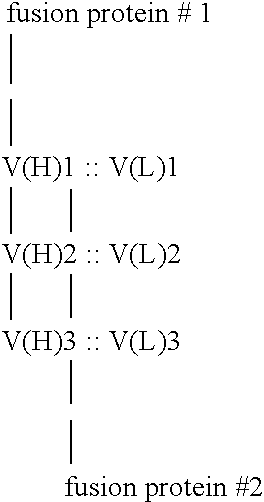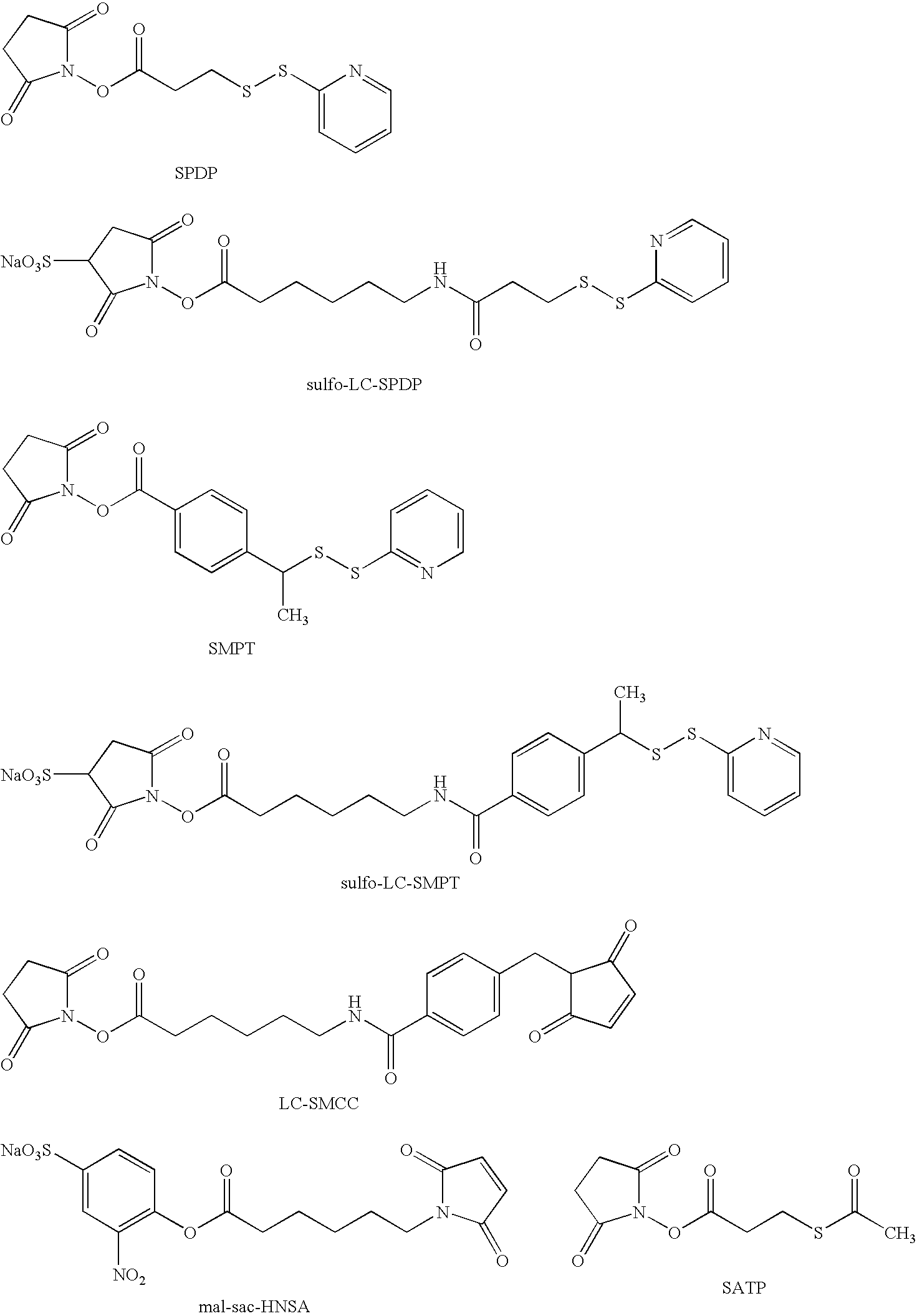Compounds and molecular complexes comprising multiple binding regions directed to transcytotic ligands
a technology of molecular complexes and complexes, which is applied in the direction of fusion polypeptides, peptide/protein ingredients, chemical treatment enzyme inactivation, etc., can solve the problems of reducing the efficacy of compounds, limiting or preventing medical use, and non-invasive administration methods
- Summary
- Abstract
- Description
- Claims
- Application Information
AI Technical Summary
Benefits of technology
Problems solved by technology
Method used
Image
Examples
example 1
Molecular Reagents
[0472] 1.1 Preparation of a Polyclonal Anti-5AF-Cys Antibody In the Examples, polyclonal antibodies directed to sFv5AF are used to simultaneously detect the single-chain antibodies sFv5AF and sFv5AF-Cys, and conjugates comprising these sFv's. The anti-sFv5AF polyclonal antibodies were prepared as follows.
[0473] FLAG-tagged sFv5AF was used as an immunogen for the production of antisera (polyclonal antibodies). The antisera was commercially prepared by HTI Bio-Products (Ramona, Calif.). In brief, 200 μg of FLAG-tagged sFv5AF was used for the initial injection (Day 1) with Complete Freund's Adjuvant, followed by boosts of 200 μg fusion protein with Incomplete Freund's Adjuvant every 2 weeks. The injections were subcutaneous. Bleeds were taken at approximately 7 weeks and 9 weeks.
[0474] The sera was screened for reactivity with sFv5AF using an ELISA. Sera that tested positive in the ELISA were examined by Western blot to confirm the presence of polyclonal antibodies...
example 2
Cloning of pIgR Genes from Various Animals and Chimeric Rat / Rabbit pIgR
[0478] 2.1. Cloning of Rat pIgR cDNA
[0479] A rat liver cDNA library (Clontech) was used as a source for template for the amplification of rat pIgR sequences. The pIgR cDNA was amplified as 5 separate fragments which can be combined to regenerate the entire rat pIgR sequence (see FIG. 6). Alternatively, the sequences contained within separately cloned cDNA's may be used as a source for sequences that encode a mouse stalk molecule or sequences derived therefrom.
[0480] As can be seen in FIG. 6, the primers used to amplify the rat cDNA regenerated or introduced restriction enzyme sites into the cDNA for ease of subcloning and other subsequent manipulations. Each fragment was treated with the appropriate restriction enzymes and ligated into a cloning vector (e.g., pBluescript from Stratagene or pUC19 from NEB) in order to generate an “intermediate vector”. The sequence of the inserted cDNA was determined in order t...
example 3
GST-Stalk Fusion Proteins
[0488] 3.1 GST-Stalk Fusion Proteins
[0489] GST-stalk fusion proteins are one type of pIgR target molecule. The GST (glutathionine-S-transferase, from Schistosoma japonica, unless otherwise indicated) polypeptide has several illustrative desirable attributes. It specifically binds glutathione, and with a sufficiently high affinity that it can be used to attach fusion proteins to solid surfaces coated with glutathione, and many such surfaces are commercially available; detectably labeled antibodies directed to GST epitopes are commercially available; and the GST amino acid sequences allow some fusion proteins to have enhanced attributes such as, e.g., enhanced solubility, biologically active conformations, and the like.
[0490] GST fusion proteins may optionally comprise elements useful for the detection, isolation, purification and manipulation of the GST fusion protein. Non-limiting examples of such elements include elements such as a 6×His tag, a FLAG tag,...
PUM
| Property | Measurement | Unit |
|---|---|---|
| Tm | aaaaa | aaaaa |
| temperature | aaaaa | aaaaa |
| molecular weight | aaaaa | aaaaa |
Abstract
Description
Claims
Application Information
 Login to View More
Login to View More - R&D
- Intellectual Property
- Life Sciences
- Materials
- Tech Scout
- Unparalleled Data Quality
- Higher Quality Content
- 60% Fewer Hallucinations
Browse by: Latest US Patents, China's latest patents, Technical Efficacy Thesaurus, Application Domain, Technology Topic, Popular Technical Reports.
© 2025 PatSnap. All rights reserved.Legal|Privacy policy|Modern Slavery Act Transparency Statement|Sitemap|About US| Contact US: help@patsnap.com



